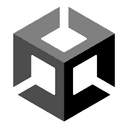
Neon is a small environment created by our Demo team’s creative director Veselin Efremov in just a couple of days, with Unity 2017.1 and models from the Asset Store. In this blog post he will be sharing some thoughts around the project and how it came about.
Starting with a bit of background: we were on the lookout for an environment artist, and I’d invited a candidate to an on-site interview in our Stockholm office. My idea was, rather than asking questions, to just build an actual small scene together for the two days we had. I’d been working on a larger project for a while, so it was a welcome break for me. The “art jam” experience felt refreshingly creative, so after we were done, I decided to do another one from scratch, with the help of our tech lead Torbjorn Laedre -- and it became Neon.
I started with downloading the latest public release of Unity from the website, and brought in the Post-Processing stack v1 and the Realtime area lights / Volumetric fog on GitHub. These are the first things I usually put in a new project, because I like to use the high quality effects and lighting to guide my creative decisions later on. I can’t bear to look at ugly stuff even if it’s just a box in an empty scene.

Torbjorn had suggested to go for a cyberpunk vibe, so I added some emissive boxes and cranked up the atmosphere density. Having made this rough layout, I liked the mood that the lighting and the fog were creating, and decided to develop it a bit further. I decided to use the Asset Store to achieve a finished look as quickly as possible.
There’s a huge choice of assets, so I’d just grab whatever looked like it would fit the overall idea, and used these to detail the scene in passes. Many of the Asset Store assets were very cheap and some were even free, so I had a lot of choice and was able to advance from the first generic sketch to a fairly finished look in less than two days:
I quickly realised that I can go for a relatively polished look with these assets, so I decided to turn it into a deliberate challenge to not move a single vertex but rely entirely on the stock models. Instead of creating custom props, I would experiment with what was available and often used the assets in unlikely ways. For instance, the mechanical underside of this building overhang is actually a part of a spaceship. And I got an entire factory set only to use the cables.

This is obviously a very unoptimised way of working, but its value is in how quickly it allows me to build a space which, to the “naked eye”, has the look and feel of something complete and visually appealing.
Early prototyping to final quality is essential to the way I work, and applies to larger projects as well -- for instance, the cinematic demos we do at Demo team. If we were making a Blade Runner-inspired demo, this small vignette would serve as our starting point for the breakdown of the project. On a small team, having a prototype on day 2 from project start means that everyone gets a very good idea of what needs to be done. It’s especially important that the artists get to discover what potential the engine tech can give them, when it is early enough to change course creatively and decide to make use of some opportunities they wouldn’t otherwise foresee. It is even more important that the programmers get a clear picture of the art- and rendering-related tasks on the project, and can identify pitfalls early on. Game designers can dive right in and start experimenting with the experience. Needless to say, it also helps guide the decisions about where to put most effort in asset production. You don’t always need to design and create your own custom set of pipes and cables, when some existing ones might do a perfect job, while the art team is focusing on the most important assets that are unique and style-defining for the game.
At the end stretch, we pulled in some help from the others on our team in order to make the scene feel more complete.
The rain was an important part of achieving the look, and Torbjorn had been working on it in the meantime. Our VFX artist Zdravko Pavlov rendered the rain texture.
The characters were static, as I was using them to populate the space and for scale reference, so it was great that our Animation Director Krasimir Nechevski could pitch in with some animations he had lying around from another project, and made the humans walk around and idle.
Aleksander Karshikoff made the audio.
By now many others from Unity are using this small scene to try something out, stretch a feature, or have some creative fun; and I’ve gone back to my main project.
Hope you enjoyed this glimpse into my work process. Here is the full list of the stock assets I used:
Asset Store Assets Package Name Publisher Price (EUR) Umbrella Pro Indie_G 4.02 Assorted Prop Pack Volumetric Games 10.71 Dragon Statue Viacheslav Titenko Free Fire Escape Undead Studios 4.47 SciFi Industrial Level Kit Ximo Catala 62.53 The Probe MACHIN3 13.40 The Starfighter MACHIN3 44.67 Pipes Kit Mojo Structure Free Neon Signs Asset Pack Zymo Entertainment 8.93 Street Props Pack Coded Soul 8.93 RainDrop Effect 2 Globe Games Free Retro Cartoon Cars - Cicada - Free Retro Valorem Free SF Buildings (RTS, FPS) GESO Media 17.87 Unity Particle Pack Unity Technologies Free Sci-Fi Top Down Pack 1 Velkin Labs 35.73 Street Lights AI Games 2.23 Total 213.49 Other Assets Four surfaces Quixel Megascans Subscription Sky HDRI NoEmotionHDRs.net Free (CC 4.0) Human Character - Male Écorché 3dscanstore.com 45.00
